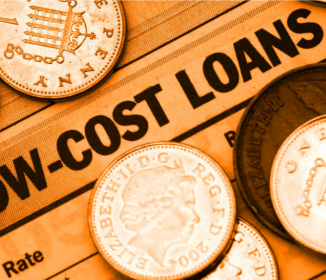Taking out any sort of loan is a large financial commitment, and while a student loan differs greatly from other types of loan, it is still important to take in to account the amount of that needs to be paid back. Regardless of the type of loan, the same principles apply: money borrowed must be paid back plus interest. Fortunately, in the case of student loans, interest rates are much lower than those placed on bank, and other variations of loan.
Although there are several providers that offer student loans, the largest provider in the UK is the Student Loans Company (SLC), a non-profit government organisation. We recommend using the SLC for your loan and any loan interest rates detailed in the article are based on loans provided by them.
When looking for a student loan, it is very unlikely that you will find a better interest rate than the one offered by the SLC. Borrowing from the Student Loans Company also prevents applicants from having to pass a credit check based on a credit rating. As most university students are under the age of 21, it is virtually impossible to have built up a good credit rating, which will ultimately mean being unable to get a regular loan.
As an example of how good interest rates on student loans are, let’s look at some recent figures: 2009/2010 – 0%; 2010/2011 – 1.5%; 2011/2012 – 1.5%. Interest rates follow the Bank of England base rate which is directly related to the state of the economy.
How are interest rates on student loans calculated?
The interest rate on a loan is basically the cost of you borrowing money. In the UK, the government aims to keep these rates as low as possible for students.
With student loans, interest rates are calculated in one of two ways: by adding 1% to the Bank of England (BoE) current base rate or by setting it the same as the inflation rate (as measured by the RPI – which measures how much the price of retail good increases each year). The Students Loan Company (SLC) will use which ever measure is lowest.
How are interest rates related to the economy?
The Bank of England sets their base rate based on their analysis of the economy. The base rate is set at a level that will minimise inflation and maintain monetary stability. Before the financial crisis, the economy was doing well; this was reflected in the base rate which was as high as 5.25%. In 2011/12, the economy is not as stable and as a result the base rate has dropped to 0.5% – therefore the interest rate of student loans is low.
Why is this important?
It is always important to know the cost of borrowing before agreeing to a low. This way you are able to remain in control of your finances at all times. You should also bear in mind that student loans use ‘compound interest’, whereby the interest earns interest. This means that even when interest rates remain the same, you are paying more money each month.
Next month’s interest = (Original amount borrowed + All previous interest).

